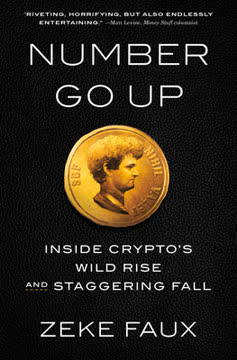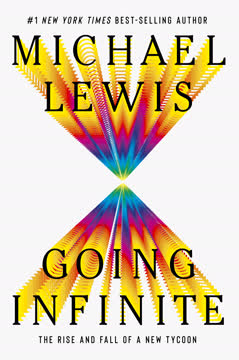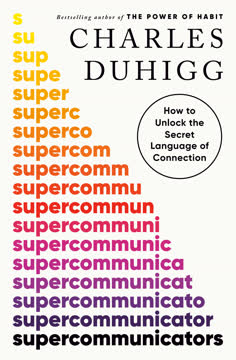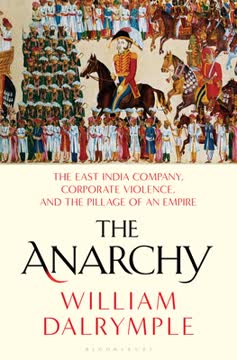Key Takeaways
1. Control Fraud: The Core of Systemic Financial Devastation
Control frauds are fi nancial superpredators that cause vastly larger losses than blue-collar thieves.
Defining Control Fraud. Control fraud, where a company is weaponized by a criminal at its helm, inflicts far greater damage than petty theft. It's theft by deception, eroding trust and causing catastrophic business failures. This form of fraud is uniquely dangerous because the person in control can override internal and external checks, subverting them to serve the fraud.
The Scale of Destruction. Control frauds are not isolated incidents; they can occur in waves, imperiling entire economies. The S&L debacle of the 1980s serves as a stark example, where systemic fraud led to massive losses and a near collapse of the financial system. The person with the greatest incentives to engage in fraud is the CEO owner of a failing firm.
The Erosion of Trust. The ongoing wave of corporate fraud is so devastating because fraud erodes trust. Trust is vital to making markets, societies, polities, and relationships work, so fraud is particularly pernicious. In a financial context, less trust means more risk, and more risk causes lower asset values.
2. Deregulation and Laxity: A Criminogenic Recipe for Disaster
Deregulation and “desupervision” added greatly to the debacle because they permitted S&Ls to invest in assets that were superb vehicles for control fraud.
The Race to the Bottom. The S&L crisis was exacerbated by a "competition in laxity," where regulators competed to offer the least restrictive oversight. This environment, coupled with deregulation, created a "criminogenic" setting ripe for control frauds to flourish. The Bank Board was at the bottom of the federal financial regulatory heap before Pratt’s deregulation and desupervision.
Structural Weaknesses. The Bank Board suffered from institutional flaws, including a separation of examination and supervision, understaffing, and outdated techniques. Examiners used state-of-the-art techniques — from the 1930s. As late as 1986, examiners drafted each report in pencil. It took an average of two months to type a report.
The Cover-Up. The Reagan administration's decision to cover up the S&L crisis further fueled the problem. By suppressing the industry's insolvency, regulators were able to engage in accounting abuses and minimize takeovers of failing institutions, creating an ideal environment for control fraud.
3. The Unlikely Hero: Ed Gray's Transformation and Reregulation
People matter in part because they vary in their concepts of duty, integrity, and courage.
From Deregulator to Reregulator. Appointed by President Reagan to promote deregulation, Ed Gray underwent a remarkable transformation, becoming a staunch advocate for reregulation and a formidable opponent of control frauds. This shift, driven by a sense of duty and integrity, made him a target of powerful enemies.
The War on Frauds. Gray's reregulation efforts, including restrictions on growth and direct investments, struck at the heart of control frauds' operations. These measures, though controversial, proved critical in curbing the excesses of the industry. The great controversies during the S&L debacle almost universally involved control frauds.
Personal Sacrifices. Gray's commitment to fighting fraud came at a significant personal cost. He faced intense political pressure, lost the support of his party, and endured personal attacks. Yet, he persevered, demonstrating extraordinary courage and integrity.
4. Political Manipulation: Keating's Audacious Assault on Regulation
The best way to rob a bank is to own one.
Keating's Influence. Charles Keating, a notorious control fraud, wielded immense political power, manipulating politicians and regulators to further his own interests. His ability to enlist allies, including U.S. senators and members of Congress, became legendary. Any control fraud could have done what Keating did in the political sphere, but only a few tried.
The Plan of Attack. Keating's strategy involved discrediting regulators, weakening oversight, and securing favorable appointments to the Bank Board. He used political contributions, lobbying efforts, and public relations campaigns to achieve his goals. Control frauds’ key skill is manipulation.
The Keating Five. The "Keating Five," a group of U.S. senators who intervened on Keating's behalf, became symbols of political corruption and ethical lapses. Their actions highlighted the vulnerability of the regulatory system to undue influence.
5. Texas-Sized Trouble: How Control Frauds Enlisted Political Allies
The control frauds were major contributors to, not victims of, the real estate recessions in Texas and Arizona in the 1980s.
The Texas Connection. Texas, with its deregulated environment and weak supervision, became a breeding ground for control frauds. These individuals, often real estate developers with conflicts of interest, exploited the system for personal gain. Texas-chartered S&Ls caused by far the worst losses during the debacle.
Jim Wright's Involvement. Speaker of the House Jim Wright became entangled with Texas control frauds, using his influence to protect them from regulatory scrutiny. This involvement ultimately led to his downfall and resignation. The Speaker’s intervention was a “hinge event” that changed a wide range of policies.
The Price of Power. Wright's actions on behalf of the control frauds had devastating consequences, including billions of dollars in losses to taxpayers and a tarnished reputation for the Democratic Party. His tragic flaw was ambition and hubris.
6. The Faustian Bargain: Short-Sighted Decisions and Long-Term Catastrophe
The cover-up led the Reagan administration to oppose Gray’s war on the frauds.
The Lure of Forbearance. In the face of mounting losses, regulators and politicians were tempted by the promise of forbearance, a policy of leniency that allowed failing institutions to delay recognizing losses and continue operating. This short-sighted approach only exacerbated the problem.
The Illusion of Recovery. Forbearance created a false sense of stability, allowing control frauds to continue looting institutions and inflating asset values. This delayed the inevitable collapse and increased the ultimate cost to taxpayers. The cover-up of the insolvency of the industry and the FSLIC optimized the industry for control fraud.
The Price of Appeasement. The decision to appease control frauds, driven by political pressure and a desire to avoid short-term pain, had disastrous long-term consequences. It allowed the worst actors to continue operating unchecked, leading to even greater losses and systemic damage.
7. Repeating History: The Failure to Learn from the S&L Debacle
Massive insolvency is far closer than it appears for control frauds.
Lessons Unlearned. Despite the S&L debacle, many of the same mistakes were repeated in subsequent financial crises. A failure to recognize the dangers of control fraud, the importance of strong regulation, and the need for ethical leadership left the system vulnerable to abuse. The ongoing financial crisis shows how poorly we learned the lessons that the S&L debacle should have taught.
The Cycle of Crisis. The ongoing wave of financial scandals demonstrates the cyclical nature of financial crises. Without effective reforms and a commitment to ethical behavior, history is doomed to repeat itself. The markets will not detect them timely. Outside professionals will aid, not restrain, control frauds.
The Need for Vigilance. Eternal vigilance is essential to prevent future waves of control fraud. This requires a commitment to strong regulation, ethical leadership, and a willingness to confront uncomfortable truths.
8. Accounting Alchemy: How Goodwill Mergers Created Fictitious Profits
Under GAAP, as they were applied in the early 1980s, two institutions with massive negative earnings could merge, and the combined entity could show positive income without the operations of either institution changing.
The Magic of Goodwill. Goodwill accounting, a seemingly innocuous practice, became a powerful tool for control frauds to inflate their reported profits and hide their true financial condition. This accounting alchemy allowed insolvent institutions to appear healthy and attract further investment. Goodwill mergers guaranteed that fraudulent, insolvent buyers won a trifecta even when the goodwill was bogus.
Gains Trading. By manipulating the value of assets in mergers, control frauds could create fictitious gains and boost their reported income. This practice, known as "gains trading," allowed them to enrich themselves while driving their institutions toward collapse. Goodwill mergers created fictitious profits in three ways.
The Illusion of Success. The fictitious profits generated by goodwill accounting created an illusion of success, shielding control frauds from regulatory scrutiny and attracting further investment. This allowed them to continue operating and looting their institutions for years.
9. Moral Hazard: The Perverse Incentives of Failing Firms
Moral hazard arises when gains and losses are asymmetrical.
Asymmetric Risk and Reward. Moral hazard, the temptation to seek gain through abusive behavior, arises when gains and losses are asymmetrical. Insolvent firms, with limited liability and the potential for upside gains, have a perverse incentive to take excessive risks.
The Incentive for Fraud. Moral hazard theory also explains why failing firms have an incentive to engage in reactive control fraud. Indeed, since S&L control fraud was a sure thing (it was certain to produce, for a time, record profits), reactive control fraud was a better option than an ultra-high-risk gamble.
The Role of Deposit Insurance. Deposit insurance, while intended to protect depositors, can exacerbate moral hazard by removing the risk of loss. This can encourage failing firms to engage in even riskier behavior, knowing that taxpayers will ultimately bear the cost of their failures.
10. The Cover-Up: A Conspiracy of Silence and Deception
The cover-up of the S&L debacle was the dominant dynamic during the Reagan administration.
Protecting the Narrative. The Reagan administration, eager to maintain a positive economic narrative, actively suppressed information about the S&L crisis. This cover-up, driven by political considerations, allowed the crisis to fester and grow. The cover-up led the Reagan administration to oppose Gray’s war on the frauds.
Abusive Accounting. The cover-up relied on abusive accounting practices, including creative regulatory accounting principles (RAP) and the manipulation of goodwill. These practices distorted financial statements and made it difficult to detect and punish fraud. The cover-up optimized the industry for control fraud.
The Cost of Deception. The cover-up ultimately failed, and the true extent of the S&L crisis was revealed. The cost of this deception, both financial and reputational, was immense.
Last updated:
Review Summary
The Best Way to Rob a Bank Is to Own One examines the 1980s S&L crisis, focusing on control fraud and regulatory failures. Readers found it informative but dense, praising Black's insider perspective and analysis of financial crimes. The book highlights how deregulation, political corruption, and weak oversight enabled massive fraud. While some struggled with the technical details, many appreciated its relevance to modern financial crises. Critics noted its personal tone and lack of context for newcomers to the subject.
Similar Books










Download PDF
Download EPUB
.epub digital book format is ideal for reading ebooks on phones, tablets, and e-readers.




